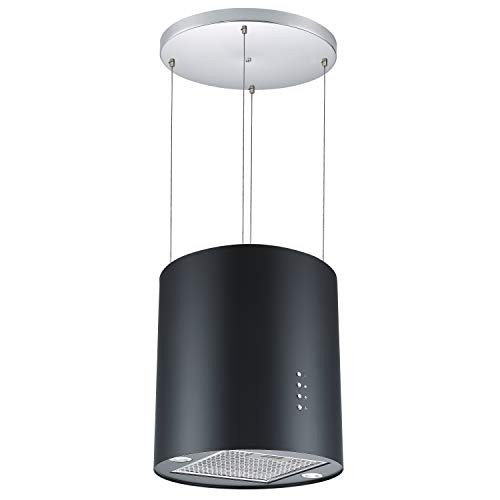
Kitchen Extractor Hoods
Add a review FollowOverview
-
Founded Date May 24, 2002
-
Sectors Corporate
-
Posted Jobs 0
-
Viewed 12
Company Description
Do Not Buy Into These “Trends” About Cooker Hood
Understanding Kitchen Cooker Hoods: A Comprehensive Guide
In the heart of every home, the kitchen stands as an important center where meals are prepared, flavors are explored, and memories are developed. However, cooking can also feature its disadvantages, such as smoke, steam, grease, and odors that stick around long after the meal is made. Go into the kitchen cooker hood, a device that plays a vital role in maintaining a clean and pleasant kitchen environment. This post will explore the numerous kinds of cooker hoods, their benefits, crucial functions to consider, and typical questions surrounding their use.
What is a Kitchen Cooker Hood?
A kitchen cooker hood, also understood as an exhaust hood or range hood, is a device set up above the cooking surface area. Its main purpose is to filter and vent pollutants, such as smoke and smells, away from the kitchen. Cooker hoods can use various approaches to accomplish this task, consisting of ducted and ductless systems.
Kinds Of Cooker Hoods
To better understand the options available, here’s a comparative summary of the different kinds of cooker hoods:
| Type | Description | Pros | Cons |
|---|---|---|---|
| Wall-Mounted | Attached to the wall above the cooking location | Space-saving, trendy styles | Limited grab bigger cooking areas |
| Under-Cabinet | Set up under kitchen cabinets | Maintains cabinet looks | Might be less effective than bigger designs |
| Island | Suspended above a kitchen island | Perfect for open-concept spaces | Needs ceiling setup |
| Downdraft | Retracts into the countertop when not in use | Smooth design, conserves overhead area | Normally less powerful |
| Professional | High-performance systems for severe cooks | Superior ventilation and capacity | More expensive, needs more maintenance |
Benefits of Using a Cooker Hood
Setting up a cooker hood in your kitchen offers numerous benefits:
-
Improved Air Quality: Cooker hoods efficiently get rid of air-borne grease, smoke, and odors, ensuring that the air remains fresh while cooking.
-
Prevention of Mold and Mildew: By reducing humidity levels produced during cooking, hoods assist prevent the development of mold and mildew.
-
Enhanced Kitchen Aesthetics: With different styles available, cooker hoods can add a touch of modernity and sophistication to any kitchen design.
-
Minimized Buildup of Grease: Regular operation of a cooker hood avoids grease from accumulating on kitchen surface areas, making clean-up easier.
-
Increased Kitchen Safety: By eliminating smoke and possibly damaging fumes, cooker hoods enhance general security while cooking.
Key Features to Consider
When picking a cooker hood for your kitchen, consider the following features:
-
Suction Power (CFM): The power of a hood is determined in cubic feet per minute (CFM). A higher CFM rating indicates an ability to get rid of smoke and odors quickly. For most kitchens, a series of 300-600 CFM is ideal.
-
Noise Level (Sonnes): Some hoods run louder than others. An unit with lower sones will offer quieter performance. Look for hoods that operate below 60 sones for a quieter cooking experience.
-
Filtering Type:
- Ducted: Vents polluted air outside, needing ductwork setup.
- Ductless: Cleans the air with filters and recirculates it back into the kitchen, ideal for apartments.
-
Design and Size: Consider the space available and the design of the kitchen. The hood must line up visually with other kitchen devices and fit comfortably above the cooktop.
-
Reduce of Cleaning: Filters need to be cleaned or changed regularly; easy-access designs make this task less burdensome.
-
Lighting: Many cooker hoods are geared up with built-in lights to illuminate the cooking surface area. Good lighting boosts presence while preparing meals.
Regularly Asked Questions (FAQ)
1. How do I determine the right size of a cooker hood for my kitchen?
To figure out the best size, the hood ought to preferably be as large as or broader than the cooking surface. In addition, consider the height and area available, guaranteeing it is set up high enough above the stove for safety and appropriate effectiveness.
2. How often should I clean up or replace the filters?
It is recommended to clean metal filters each month and change them every couple of months, depending on usage. Charcoal filters in ductless designs might require replacement every 3-6 months.
3. Can I use my cooker hood without ductwork?
Yes, ductless cooker hoods work without comprehensive ductwork. They filter the air before sending it back into the kitchen. However, ducted choices are generally more effective for ventilating the kitchen.

4. Are all cooker hoods loud?
Not all cooker hoods are loud. The sound levels vary by model, with some being more effective and quieter than others. Constantly examine the sones rating to discover a quieter alternative.
5. Is it essential to have a cooker hood?
While not necessary, a cooker hood is highly suggested for lowering indoor air pollutants, enhancing ventilation, and preserving a cleaner kitchen environment.
Cooking is an art kind that deserves the right environment. A kitchen cooker hood is not just a home appliance; it is an essential tool for promoting safety, tidiness, and comfort while cooking. By absorbing undesirable smells, wetness, and air-borne particles, a cooker hood produces a wonderful atmosphere where culinary experiences can grow. When selecting the ideal cooker hood, consider your kitchen’s layout, your cooking routines, and the range of functions offered to find the ideal match. By investing in a quality cooker hood, house owners can raise their cooking experience while making sure a cleaner and safer kitchen.

